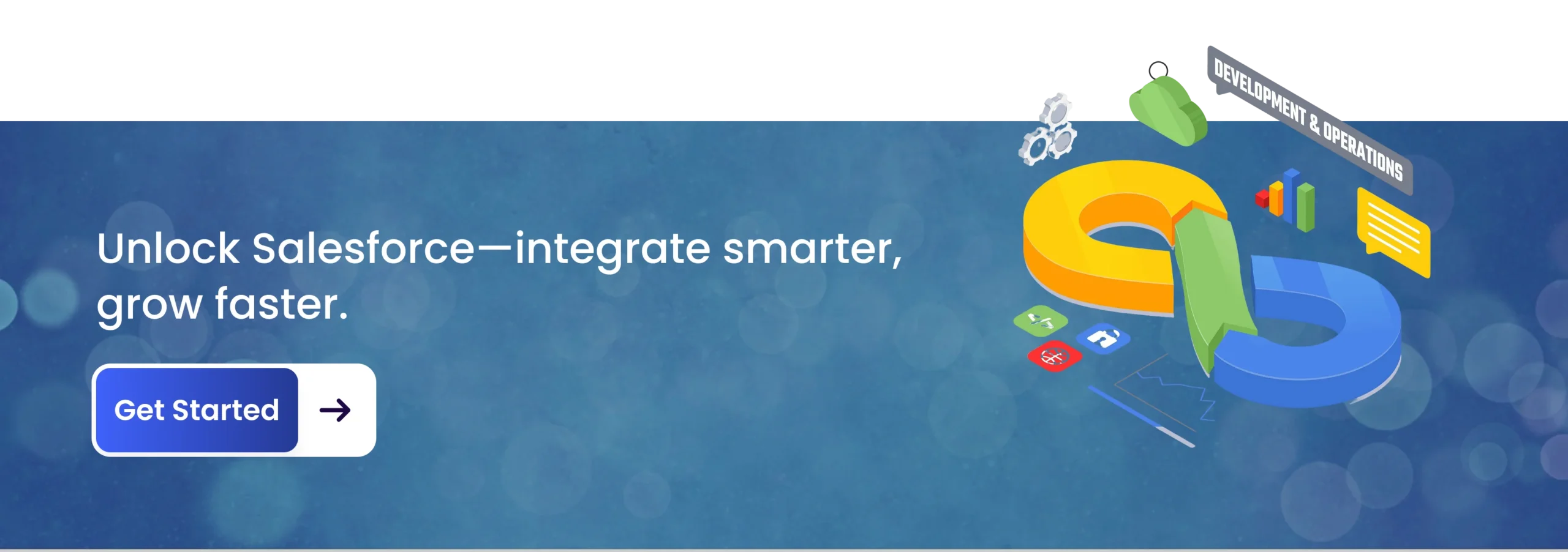
Salesforce integration tools empower businesses to connect their CRM with apps, data, and workflows for greater efficiency. From MuleSoft's enterprise-grade flexibility to Zapier's no-code simplicity, these tools cater to diverse business needs. Jitterbit and Informatica shine in real-time data synchronization, while Workato and Boomi focus on automation and scalability. For businesses seeking pre-built options, AppExchange offers ready-to-use integrations. Choosing the right tool depends on factors like budget, complexity, and scale—ensuring smoother operations, smarter insights, and improved customer experiences across all business levels.
Quick Summary
Salesforce integration tools empower businesses to connect their CRM with apps, data, and workflows for greater efficiency. From MuleSoft's enterprise-grade flexibility to Zapier's no-code simplicity, these tools cater to diverse business needs. Jitterbit and Informatica shine in real-time data synchronization, while Workato and Boomi focus on automation and scalability. For businesses seeking pre-built options, AppExchange offers ready-to-use integrations. Choosing the right tool depends on factors like budget, complexity, and scale—ensuring smoother operations, smarter insights, and improved customer experiences across all business levels.
Key Takeaways
MuleSoft is best for enterprise-level, complex Salesforce integrations.
Zapier enables simple, no-code Salesforce automations for SMBs.
Jitterbit & Informatica excel at real-time data management and analytics.
Workato & Boomi focus on scalable automation and hybrid integrations.
Salesforce AppExchange provides quick, pre-built integration apps.
Introduction
In 2025, businesses thrive on connectivity and automation. With Salesforce leading as the world's #1 CRM, companies are eager to integrate it with other platforms—whether it's ERP systems, marketing automation tools, or accounting software. That's where Salesforce Integration Tools step in. They help businesses save time, reduce errors, and boost productivity by connecting multiple applications seamlessly.
What is Salesforce Integration?
Salesforce Integration is the process of connecting Salesforce with other tools and platforms so data flows automatically. For example, when a customer makes a purchase in Shopify, their details can instantly appear in Salesforce CRM without manual entry.
This seamless data flow eliminates manual work, reduces errors, and ensures all teams have access to real-time information across your entire business ecosystem.
Benefits of Salesforce Integration Tools
Centralized Data
No more juggling between platforms—everything syncs into Salesforce.
Enhanced Productivity
Automated workflows cut down manual tasks.
Real-Time Insights
Sales, marketing, and service teams access updated data anytime.
Cost Savings
Reduces human error and increases operational efficiency.
Criteria for Choosing Salesforce Integration Tools
Before picking an integration tool, consider:
Ease of Use – Is it no-code or developer-heavy?
Scalability – Can it grow with your business?
Security Features – Does it ensure compliance with GDPR/other laws?
Pricing & Support – Does it fit your budget and provide reliable support?

Top 7 Salesforce Integration Tools
1. MuleSoft Anypoint Platform
Features: Connects cloud & on-prem systems, robust APIs, real-time data sync.
Pros: Enterprise-grade, scalable, highly secure.
Cons: Expensive, requires skilled developers.
Best For: Large enterprises with complex ecosystems.
2. Zapier
Features: 5000+ app connections, drag-and-drop workflows, no coding.
Pros: Easy setup, affordable, perfect for SMBs.
Cons: Limited for complex enterprise systems.
Best For: Startups and non-tech teams.
3. Dell Boomi
Features: Cloud-based iPaaS, drag-and-drop UI, pre-built connectors.
Pros: Quick deployment, scalable.
Cons: Costs may rise with usage.
Best For: Cloud-first companies.
4. Workato
Features: Advanced automation, machine learning-driven workflows.
Pros: Great for scaling automations, supports AI-driven workflows.
Cons: Steeper learning curve.
Best For: Businesses seeking enterprise-grade automation.
5. Jitterbit
Features: API integration, pre-built templates, quick deployments.
Pros: Fast setup, strong support.
Cons: Limited flexibility for highly customized workflows.
Best For: Companies needing quick, reliable integrations.
6. Informatica Cloud
Features: Data integration, analytics, data governance.
Pros: Powerful for data-heavy organizations, ensures compliance.
Cons: Can be complex for small teams.
Best For: Finance, healthcare, and enterprises needing strict data management.
7. Salesforce AppExchange
Features: Thousands of pre-built apps for plug-and-play integration.
Pros: Easy to implement, reduces development time.
Cons: May not cover all complex needs.
Best For: Businesses needing ready-to-use solutions quickly.
Comparison Table of Top Salesforce Integration Tools
| Tool | Best For | Ease of Use | Scalability | Pricing |
| MuleSoft | Large Enterprises | Medium | High | $$$$ |
| Zapier | SMBs & Startups | High | Medium | $$ |
| Dell Boomi | Cloud Integrations | High | High | $$$ |
| Workato | Automation at Scale | Medium | High | $$$$ |
| Jitterbit | Quick Deployments | High | Medium | $$ |
| Informatica Cloud | Data-Heavy Enterprises | Medium | High | $$$$ |
| AppExchange | Ready-to-Use Solutions | High | Medium | $$-$$$ |
Common Challenges in Using Integration Tools
Data Silos: Incomplete integrations lead to fragmented data.
Security & Compliance: Sensitive data requires strong governance.
High Costs: Some enterprise tools may be costly for SMBs.
Best Practices for Salesforce Integration
Define clear business goals before integrating.
Use standardized APIs wherever possible.
Conduct regular data audits.
Monitor performance and security continuously.
Industries Leveraging Salesforce Integration Tools
Healthcare: Patient data syncing.
Finance: Secure payment system integrations.
Retail & E-commerce: Syncing inventory, orders, and customer profiles.
Nonprofits: Donation and volunteer management systems.
Future of Salesforce Integration Tools
Expect AI-driven integrations, hyperautomation, and low-code/no-code platforms to dominate beyond 2025. Businesses will rely less on coding and more on intelligent automation.
Step-by-Step Guide to Implementing Salesforce Integration Tools
Implementation Steps
Identify business needs.
Select the right tool (MuleSoft, Zapier, etc.).
Map workflows and configure integrations.
Test integrations thoroughly.
Monitor and optimize regularly.
Conclusion: Choose the Right Integration Tool for Your Business
Salesforce Integration Tools are no longer optional—they’re essential for scalability, efficiency, and customer experience. From MuleSoft for enterprises to Zapier for startups, businesses in 2025 have plenty of choices to create a connected ecosystem. Choosing the right tool depends on your goals, budget, and level of complexity.

Frequently Asked Questions
Zapier is the top choice due to its ease of use and affordability.
MuleSoft is better for complex enterprise systems, while Zapier suits SMBs.
Most tools like Zapier, Dell Boomi, and Workato offer no-code/low-code solutions.
Pricing varies—Zapier starts affordable, while MuleSoft and Informatica can be costly for enterprises.
AI-driven, low-code, and hyperautomation platforms will lead the next wave of integrations.